Kenneth Chun-Wai Cheung
age ~42
from Portola Valley, CA
- Also known as:
-
- Kenneth C Cheung
- Ken C Cheung
- Kenneth Chung
Kenneth Cheung Phones & Addresses
- Portola Valley, CA
- Mountain View, CA
- Emerald Hills, CA
- Cambridge, MA
- Boston, MA
- Somerville, MA
- Freehold, NJ
Work
-
Company:Marnsales incApr 2014
-
Position:Online sales person
Education
-
School / High School:East Los Angeles College- Monterey Park, CA2009
-
Specialities:Accounting
Specialities
Real Estate • Corporate & Incorporation • Contracts & Agreements • Debt & Lending Agreements • Debt & Lending Agreements • Debt & Lending Agreements
Lawyers & Attorneys

Kenneth Cheung - Lawyer
view sourceOffice:
Allstate Insurance Company
Specialties:
Real Estate
Corporate & Incorporation
Contracts & Agreements
Debt & Lending Agreements
Debt & Lending Agreements
Debt & Lending Agreements
Corporate & Incorporation
Contracts & Agreements
Debt & Lending Agreements
Debt & Lending Agreements
Debt & Lending Agreements
ISLN:
916377715
Admitted:
1999
University:
University of Illinois, B.S., 1996
Law School:
DePaul University, J.D., 1999
Us Patents
-
Cellular Automotion Digital Material
view source -
US Patent:20100292836, Nov 18, 2010
-
Filed:Mar 25, 2010
-
Appl. No.:12/732184
-
Inventors:Kenneth C. Cheung - Boston MA, US
Ara Knaian - Newton MA, US
Neil Gershenfeld - Somerville MA, US -
Assignee:Massachusetts Institute of Technology - Cambridge MA
-
International Classification:G06F 19/00
B25J 17/00 -
US Classification:700245, 7449005
-
Abstract:Cellular automotion digital material is useable for rapid prototyping and fabrication of continuous string conformations and two- or three-dimensional shapes through actuation of a string, surface, or volume composed of identical discrete units. Each unit is an actuated joint having a single degree of freedom. The actuated joint includes a two-part actuator having an inner active portion and an outer passive portion that are controllably rotatable relative to each other, the outer portion being configured to fit within the housing of an adjacent cellular automotion unit, and a linkage element that includes a main strut and a housing and is connected to the actuator by a pin connector. The housing is configured to house the actuator of an adjacent cellular automation unit, and the opening in the strut is rotated about the axis of symmetry of the cellular automotion unit relative to the opening in the housing so that the alignment of the cellular automotion unit will be rotated with respect to the alignment of any adjacent unit. The cellular automotion unit may include an on-board processor for controlling actuation of the cellular automotion unit.
-
Methods And Apparatus For Digital Composites
view source -
US Patent:20120094060, Apr 19, 2012
-
Filed:Oct 19, 2011
-
Appl. No.:13/277103
-
Inventors:Neil Gershenfeld - Somerville MA, US
Kenneth Cheung - Boston MA, US -
Assignee:MASSACHUSETTS INSTITUTE OF TECHNOLOGY - Cambridge MA
-
International Classification:B32B 3/06
B23P 11/00
B32B 5/02 -
US Classification:428 99, 29428
-
Abstract:In exemplary implementations of this invention, a digital material comprising many discrete units is used to fabricate a sparse structure. The units are reversibly joined by elastic connections. Each unit comprises fiber-reinforced composite material. Each unit is small compared to the sparse structure as a whole. Likewise, in a sparse structure made from this digital material, the number of types of units is small compared to the total number of units. The digital material is anisotropic. This anisotropy may be due to different fiber orientations within each unit. Furthermore, different units in a single sparse structure may be oriented in different directions and in different, non-parallel planes. In some cases, the digital material is reinforced with carbon fibers, and connections between units are stronger than the units themselves. The small discrete units may be assembled into a strong, lightweight sparse structure, such as an airframe.
-
Methods And Apparatus For Online Calorimetry
view source -
US Patent:20120303153, Nov 29, 2012
-
Filed:Feb 2, 2012
-
Appl. No.:13/365199
-
Inventors:Neil Gershenfeld - Somerville MA, US
Nadya Peek - Cambridge MA, US
Kenneth Cheung - Boston MA, US
David Watson - Newtownabbey, GB -
Assignee:MASSACHUSETTS INSTITUTE OF TECHNOLOGY - Cambridge MA
-
International Classification:B29C 39/00
-
US Classification:700198
-
Abstract:In exemplary implementations of this invention, a network of nodes controls and senses the cure of a thermosetting plastic in a component that is made of fiber composite material. The network comprises multiple nodes, which are separated spatially from each other. Each of the nodes, respectively, comprises a heat transfer device for actively transferring thermal energy, a temperature sensor for taking local temperature measurements, and a processor. In each of the nodes, respectively: (a) the processor locally performs closed loop control over the temperature of the heat transfer device, and (b) the closed loop control is based at least in part on the local temperature measurements and on estimated or measured input current to the heat transfer device.
-
Methods And Apparatus For Assembly
view source -
US Patent:20140018441, Jan 16, 2014
-
Filed:Jul 12, 2013
-
Appl. No.:13/941405
-
Inventors:Charles Fracchia - Cambridge MA, US
Neil Gershenfeld - Cambridge MA, US
Kenneth Cheung - Freehold NJ, US -
International Classification:C07H 21/04
-
US Classification:514777, 536 231, 530395, 5303911, 422149
-
Abstract:In exemplary implementations of this invention, hierarchical, nanometer-precise assembly is performed: A first structural unit is attached to a solid substrate in a first fluidic flow. A second structural unit is attached to the first structural unit in a second fluidic flow, a third structural unit is attached to the second structural unit in a third fluidic flow, and so on, until a target structure comprising the structural units is assembled. The first, second, third and so on fluidic flows are separate and occur in order in a temporal sequence. During the temporal sequence, a specific permutation of nucleobases is used repeatedly, in separate fluidic flows which occur at different times, to form multiple attachments between structural units in an assembly. The assembled target structure is removed from the solid substrate. Attachments between the structural units may be formed by nucleobase pairing.
-
Digital Flexural Materials
view source -
US Patent:20140037873, Feb 6, 2014
-
Filed:Aug 7, 2013
-
Appl. No.:13/961880
-
Inventors:Kenneth C. Cheung - Boston MA, US
Neil Adam Gershenfeld - Somerville MA, US -
Assignee:MASSACHUSETTS INSTITUTE OF TECHNOLOGY - Cambridge MA
-
International Classification:B32B 3/06
E04B 1/02
B64C 1/00 -
US Classification:428 341, 428 99, 29428
-
Abstract:Digital flexural materials are kits of discrete parts that can be assembled into a lattice structure to produce functionally useful assemblies. Digital flexural materials enable design of materials with many small and inexpensive flexures that combine in a lattice geometry that permits deformation without compromising the strength of the assembly. The number of types of parts in a kit is small compared to the total number of parts. A product constructed from digital flexural materials comprises a set of discrete units that are assembled into the structure according to a lattice geometry, with a majority of the units being reversibly connected to at least two other units in the set according to the lattice geometry, and wherein, in response to loading of the structure, a reversible deformation of at least part of the structure occurs. An automated process may be employed for constructing a product from digital flexural materials.
-
Method For Discrete Assembly Of Cuboctahedron Lattice Materials
view source -
US Patent:20210146581, May 20, 2021
-
Filed:Nov 19, 2020
-
Appl. No.:16/952896
-
Inventors:- Cambridge MA, US
- Washington DC, US
Kenneth Cheung - Emerald Hills CA, US
Christine Gregg - Emerald Hills CA, US -
Assignee:Massachusetts Institute of Technology - Cambridge MA
United States Government as represented by The Administrator of NASA - Washington DC -
International Classification:B29C 45/00
B29C 65/48
B29C 65/60
B29C 65/02
B29C 65/00 -
Abstract:A method for the design, manufacture, and assembly of modular lattice structures composed of cuboctahedron unit cells.
-
Elastic Shape Morphing Of Ultra-Light Structures By Programmable Assembly
view source -
US Patent:20200283121, Sep 10, 2020
-
Filed:Mar 9, 2020
-
Appl. No.:16/812502
-
Inventors:- Cambridge MA, US
Neil Gershenfeld - Cambridge MA, US
Sean Swei - Moffett Field CA, US
Nicholas Cramer - Moffett Field CA, US
Kenneth Cheung - Moffett Field CA, US -
Assignee:Massachusetts Institute of Technology - Cambridge MA
-
International Classification:B64C 3/48
C08L 79/08
C08K 7/14
B64C 3/52
B64C 3/26 -
Abstract:A shape-morphing ultralight structure using materials that dramatically increase the efficiency of load-bearing aerostructures that includes a programmable material system applied as a large-scale, ultralight, and conformable (shape-morphing) aeroelastic structure. The use of a modular, lattice-based, ultralight material results in stiffness and density typical of an elastomer. This, combined with a building block-based manufacturing and configuration strategy, enables the rapid realization of new adaptive structures and mechanisms. The heterogeneous design with programmable anisotropy allows for enhanced elastic and global shape deformation in response to external loading, making it useful for tuned fluid-structure interaction. The present invention demonstrates an example application experiment using two building block types for the primary structure of a 4.27 m wingspan aircraft with spatially programed elastic shape morphing to increase aerodynamic efficiency.
-
Methods And Apparatus For Digital Material Skins
view source -
US Patent:20160070254, Mar 10, 2016
-
Filed:Jun 21, 2013
-
Appl. No.:13/924530
-
Inventors:Sarah Hovsepian - Cambridge MA, US
Neil Adam Gershenfeld - Somerville MA, US
Kenneth Cheung - Boston MA, US -
Assignee:MASSACHUSETTS INSTITUTE OF TECHNOLOGY - Cambridge MA
-
International Classification:G05B 19/4097
-
Abstract:A digital material skin is made of a set of discrete units with a finite set of parts and joints. The discrete units are assembled into a layer according to a regular geometry, with each of the discrete units being reversibly connected to at least one other unit in the set. The reversibly connected set of units forms an exterior structure surface that is larger than the individual discrete units. Digital material skins may be used to construct any shape or interior volume, whether regular or amorphous. The skin surface may be enclosed or open. The skin may rely on an interior digital material structure for support or may be self-supported. The skin may be part of a larger assembly or apparatus, enclosing an interior volume or structure.
Resumes

Sales Representative
view sourceWork:
Landpower Real Estate Ltd., Brokerage
Sales Representative
Vaw Systems Ltd. Apr 2001 - Sep 2004
Commercial Project Manager
Sales Representative
Vaw Systems Ltd. Apr 2001 - Sep 2004
Commercial Project Manager
Education:
Red River College
Skills:
Microsoft Office
Customer Service
Microsoft Excel
Leadership
Microsoft Word
Research
Powerpoint
Public Speaking
Social Media
Autocad
Customer Service
Microsoft Excel
Leadership
Microsoft Word
Research
Powerpoint
Public Speaking
Social Media
Autocad
Certifications:
Ontario Certified Engineering Technologist

Research Scientist And Engineer And Designer
view sourceLocation:
San Francisco, CA
Industry:
Aviation & Aerospace
Work:
Massachusetts Institute of Technology (Mit) Sep 2012 - Sep 2013
Post-Doctoral Associate
Nasa Sep 2012 - Sep 2013
Research Scientist and Engineer and Designer
Massachusetts Institute of Technology (Mit) Jun 2007 - Aug 2012
Ph.d Student and Research Assistant
Massachusetts Institute of Technology (Mit) Jun 2005 - May 2007
Master's Student and Research Assistant
Fablab Jun 2005 - May 2007
Fab Lab Helper
Post-Doctoral Associate
Nasa Sep 2012 - Sep 2013
Research Scientist and Engineer and Designer
Massachusetts Institute of Technology (Mit) Jun 2007 - Aug 2012
Ph.d Student and Research Assistant
Massachusetts Institute of Technology (Mit) Jun 2005 - May 2007
Master's Student and Research Assistant
Fablab Jun 2005 - May 2007
Fab Lab Helper
Education:
Massachusetts Institute of Technology 2007 - 2012
Doctorates, Doctor of Philosophy, Philosophy Massachusetts Institute of Technology 2005 - 2007
Master of Science, Masters Cornell University 2000 - 2005
Bachelor of Architecture, Bachelors
Doctorates, Doctor of Philosophy, Philosophy Massachusetts Institute of Technology 2005 - 2007
Master of Science, Masters Cornell University 2000 - 2005
Bachelor of Architecture, Bachelors

Kenneth Cheung
view source
Kenneth Cheung
view source
Kenneth Cheung
view source
Kenneth Cheung
view sourceLocation:
San Francisco Bay Area
Industry:
Computer Software
Skills:
Microsoft Office
Troubleshooting
Windows
Troubleshooting
Windows

Kenneth Cheung Culver City, CA
view sourceWork:
Marnsales Inc
Apr 2014 to 2000
Online Sales Person United Accounting & Tax
Nov 2009 to 2000
Accounting/ Bookkeeper Million Dollar Baby
Montebello, CA
Mar 2013 to Apr 2014
IT Specialist Million Dollar Baby
Montebello, CA
Aug 2010 to Mar 2013
Accounts Receivable Specialist Vaco Technology Services
Torrance, CA
Aug 2009 to Nov 2009
Helpdesk Engineer Turner Techtronics
Burbank, CA
Aug 2007 to Aug 2009
Helpdesk Analyst Mechanized Propulsion Systems
Rosamond, CA
Jul 2007 to Dec 2008
Web Page Developer Transportation Security Administration
San Jose, CA
Aug 2005 to Mar 2007
Transportation Security Officer
Apr 2014 to 2000
Online Sales Person United Accounting & Tax
Nov 2009 to 2000
Accounting/ Bookkeeper Million Dollar Baby
Montebello, CA
Mar 2013 to Apr 2014
IT Specialist Million Dollar Baby
Montebello, CA
Aug 2010 to Mar 2013
Accounts Receivable Specialist Vaco Technology Services
Torrance, CA
Aug 2009 to Nov 2009
Helpdesk Engineer Turner Techtronics
Burbank, CA
Aug 2007 to Aug 2009
Helpdesk Analyst Mechanized Propulsion Systems
Rosamond, CA
Jul 2007 to Dec 2008
Web Page Developer Transportation Security Administration
San Jose, CA
Aug 2005 to Mar 2007
Transportation Security Officer
Education:
East Los Angeles College
Monterey Park, CA
2009 to 2011
Accounting San Jos State University
San Jose, CA
2003 to 2006
BS in Computer Science Pasadena City College
Pasadena, CA
2001 to 2003
AA in Computer Science
Monterey Park, CA
2009 to 2011
Accounting San Jos State University
San Jose, CA
2003 to 2006
BS in Computer Science Pasadena City College
Pasadena, CA
2001 to 2003
AA in Computer Science
Youtube
Myspace
Plaxo

Kenneth Cheung
view sourceMarkham, Ontario, Canada

Kenneth Cheung
view sourceHong Kong

Kenneth Cheung
view sourceTexasDirector, Porject management at Powermat

Kenneth Cheung
view sourceFlextronics
Flickr

Kenneth Kwokhing Cheung
view source
Kenneth Cheung
view source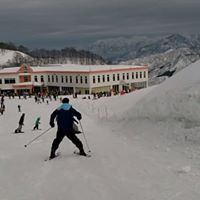
Kenneth Cheung
view source
Kenneth Cheung H Chung
view source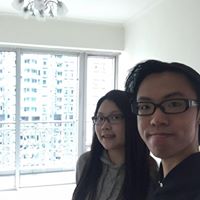
Kenneth Cheung
view source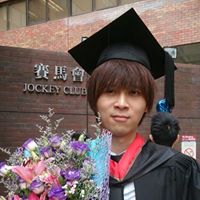
Kenneth Cheung
view source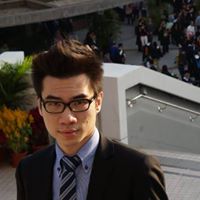
Kenneth Cheung
view source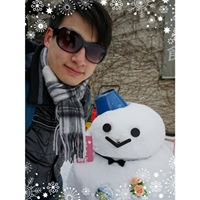
Kenneth Cheung
view sourceGoogleplus

Kenneth Cheung
Work:
Amour Wedding Studio - Editor (2010)
Amour Wedding Studio - Photographer (2009)
Amour Wedding Studio - DP/Cinematographer (2010)
Amour Wedding Studio - Photographer (2009)
Amour Wedding Studio - DP/Cinematographer (2010)
Tagline:
Inspired Photographer, Storyteller/Cinematographer and Dreamer
Bragging Rights:
Storyteller, Thinker, Dreamer, Creatives

Kenneth Cheung
Work:
Bank of Montreal - Technology Consultant
Education:
University of Ottawa - Computer Engineering
Tagline:
Just a Geek
Bragging Rights:
Just a Geek

Kenneth Cheung
Education:
Hong Kong Polytechnic University - Print Media
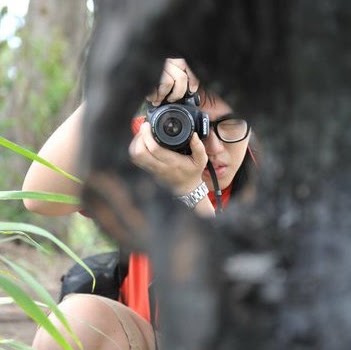
Kenneth Cheung
Education:
Po Leung Kuk 1984 College, City University of Hong Kong

Kenneth Cheung

Kenneth Cheung
About:
"Charity is more than just helping the others; it’s a process of understanding life through sharing and empathy."
Tagline:
"Don't die, with the music still in you" ~Wayne Dyer ~

Kenneth Cheung

Kenneth Cheung
News

Here’s why Super Micro (SMCI) stock price is crashing
view source- In tandem, although such changes do bring about a certain degree of uncertainty, the naming of former company vice president of finance, Kenneth Cheung as the new chief accounting officer, as well as the announced intention to name new personnel to the positions of general counsel, chief compliance
- Date: Dec 11, 2024
- Category: Business
- Source: Google

MIT and NASA engineers demonstrate a new kind of airplane wing
view source- in the design and manufacturing of future aircraft. The new wing design was tested in a NASA wind tunnel and is described today in a paper in the journal Smart Materials and Structures, co-authored by research engineer Nicholas Cramer at NASA Ames in California; MIT alumnus Kenneth Cheung SM '07 Ph.
- Date: Apr 01, 2019
- Category: Science
- Source: Google

MIT and NASA engineers demonstrate a new kind of airplane wing
view source- The new wing design was tested in a NASA wind tunnel and is described today in a paper in the journal Smart Materials and Structures, co-authored by research engineer Nicholas Cramer at NASA Ames in California; MIT alumnus Kenneth Cheung SM 07 PhD 12, now at NASA Ames; Benjamin Jenett, a graduate
- Date: Apr 01, 2019
- Category: Science
- Source: Google

Researchers invent a new approach to assembling big structures out of LEGO ...
view source- According to MITnews, the small blocks can be mass-produced. In fact, Gershenfeld andpostdoc Kenneth Cheung are creating a robotic system to turn them into airplane parts and other components of large structures. A robot will likely move very slowly over the surface of a forming structure, snapping
- Date: Aug 17, 2013
- Category: Sci/Tech
- Source: Google

A Tiny Transforming Robot Inspired by Protein (and Junkyard Magnets)
view source- Knaian and his co-designers, Neil Gershenfeld, head of MITs Center for Bits and Atoms, and Kenneth Cheung, call their invention the electropermanent motor, and its already getting attention from industry. Theyre working with the precision device maker Moog (MOG/A) to design airplane flap contro
- Date: Dec 05, 2012
- Category: Sci/Tech
- Source: Google

The robotic equivalent of a Swiss army knife
view source- The device was conceived by Neil Gershenfeld, head of MITs Center for Bits and Atoms, visiting scientist Ara Knaian and postdoctoral associate Kenneth Cheung, and is described in a paper presented recently at the 2012 Intelligent Robots and Systems conference. Its key feature, Gershenfeld says: It
- Date: Dec 01, 2012
- Category: Sci/Tech
- Source: Google
Classmates

Kenneth Cheung
view sourceSchools:
Columbia College Vancouver Saudi Arabia 1974-1978
Community:
Jennifer Hartung, Ilya Gutierrez, Tricia Ewart

Kenneth Cheung (Chance)
view sourceSchools:
Horace Greeley Junior High School 10 Long Island City NY 1979-1981
Community:
Richard Martin, Maritza Martell

Kenneth Cheung
view sourceSchools:
DeVry Tech Woodbridge NJ 1971-1975
Community:
Stan Woods, Tracy Williams

DeVry Tech, Woodbridge, N...
view sourceGraduates:
Dennis Hartley (1982-1986),
Sean Malone (1991-1995),
Jeffrey Smith (1981-1983),
Clayton Caldwell (1983-1986),
Kenneth Cheung (1971-1975)
Sean Malone (1991-1995),
Jeffrey Smith (1981-1983),
Clayton Caldwell (1983-1986),
Kenneth Cheung (1971-1975)

Columbia College, Vancouv...
view sourceGraduates:
Lawrence Lawrence Chong Kwong Loong (1991-1995),
Ilya Ilya Gutierrez (1992-1996),
Kenneth Cheung (1974-1978)
Ilya Ilya Gutierrez (1992-1996),
Kenneth Cheung (1974-1978)

Horace Greeley Junior Hig...
view sourceGraduates:
Evan Chowdhury (1999-2003),
Manuel Briones (1985-1989),
Davida McQuillan (1965-1968),
Kenneth Cheung (1979-1981),
Patricia Goss (1978-1980)
Manuel Briones (1985-1989),
Davida McQuillan (1965-1968),
Kenneth Cheung (1979-1981),
Patricia Goss (1978-1980)

Ottawa University, Ottawa...
view sourceGraduates:
Kenneth Cheung (2000-2003),
Ilka Soeder (1980-1984),
Ignatius Scime (1951-1956),
Jacques Therrien (1951-1955)
Ilka Soeder (1980-1984),
Ignatius Scime (1951-1956),
Jacques Therrien (1951-1955)
Get Report for Kenneth Chun-Wai Cheung from Portola Valley, CA, age ~42

![Kenneth Cheung - [Audio] Kenneth Cheung - [Audio]](https://i.ytimg.com/vi/z_f8z75lD6k/hq720.jpg?sqp=-oaymwE2CNAFEJQDSFXyq4qpAygIARUAAIhCGAFwAcABBvABAfgB_gmAAtAFigIMCAAQARhbIFsoWzAP&rs=AOn4CLBxH7Dmw_4eDQBEO_AyZ7s6Xxo1oQ)












